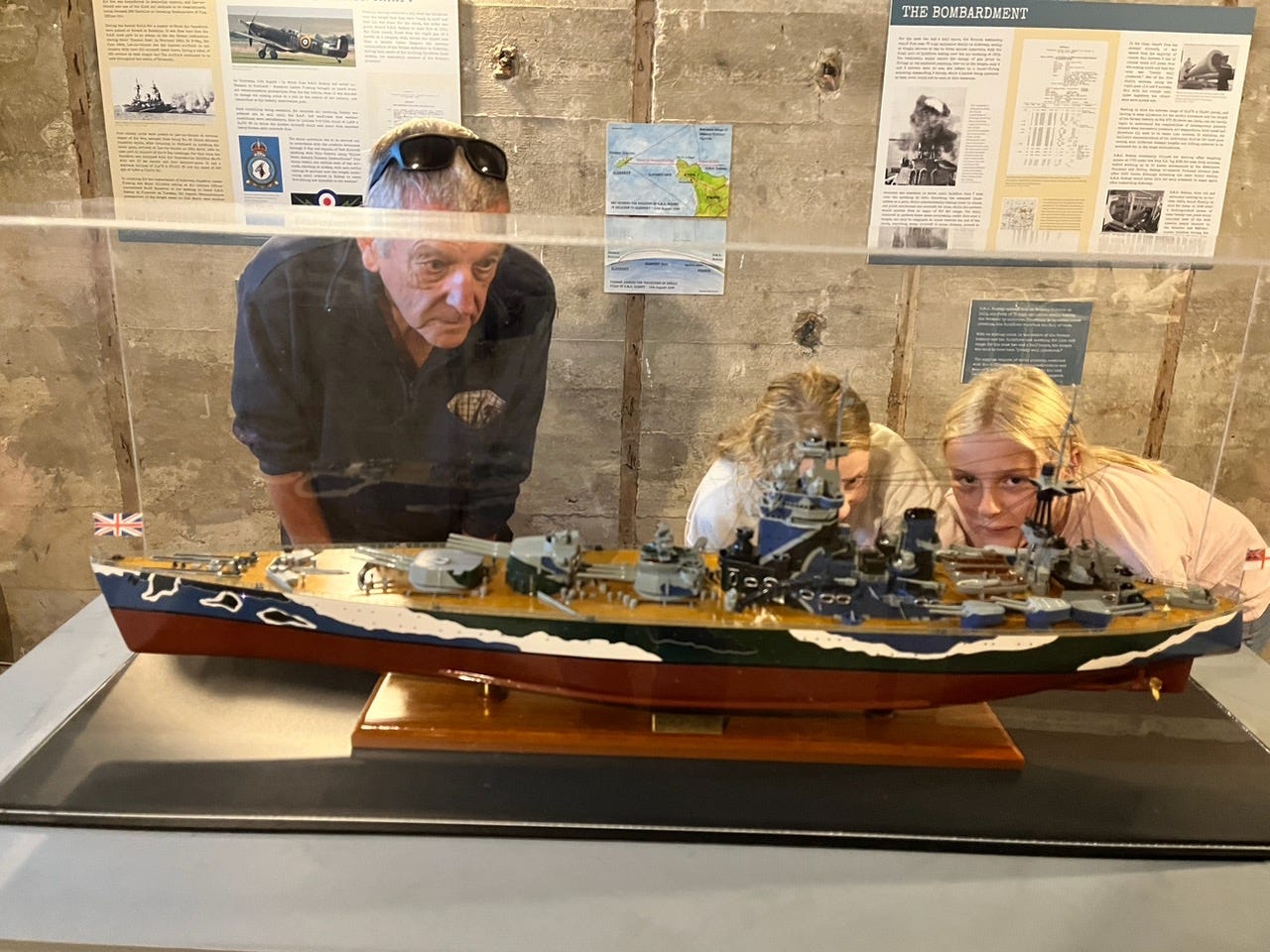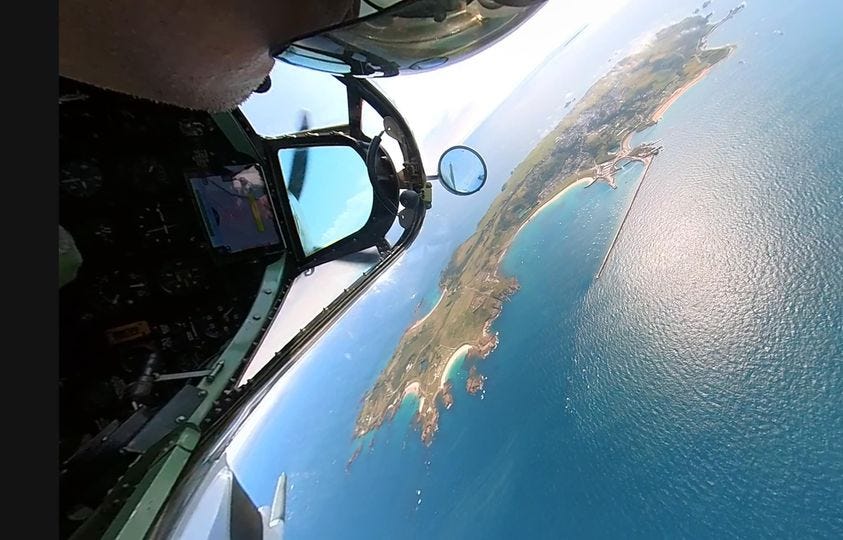Why was a World War II Spitfire in the skies over the tiny island of Alderney, just a few miles off the coast of France, in August?
The unmistakable growl of its Rolls Royce Merlin engine and daring aerobatics by pilot Neil Parkinson brought gasps of delight to the crowds below.
Neil got this shot of the island from his cockpit on a special day to mark the 80th anniversary of an event which sparked the beginning of the end of German occupation of this stunning island – an event which saw the only time the Royal Navy has been ordered to fire on British territory.
Two Spitfires were in the air over Alderney on 12th August 1944, acting as spotters for the enormous firepower of the battleship HMS Rodney positioned 19 miles away near Cherbourg, behind the Cap de la Hague peninsular. Their target – the German guns of Battery Blücher on Alderney that threatened Allied troops and shipping following D-Day.

There’s a fabulous small exhibition of the event at Alderney’s restored German Hospital Bunker where casualties were treated following the long afternoon of shelling. I soaked up the astonishing detail not least because my father served on Rodney before the war at the start of his Royal Navy career. (He later had his own command, a Royal Indian Navy frigate, and later rose to the rank of Lieutenant Commander RN before joining the Royal Navy Reserve in the ‘50s).
My uncles were both ‘fliers’, one a Bomber Command Wing Commander, the other a Squadron Leader flying these same triumphant fighters in the Battle of Britain skies.
Why the shelling?
The entire population of Alderney – 1500 souls – had been evacuated in June 1940 and days later the Germans arrived to turn this lovely island into a part of Hitler’s Atlantic Wall, using slave labour in extremely cruel conditions. Following D-Day, the Allies mistakenly feared the German guns in Alderney could disrupt their advance through France, or at least sink supply shipping on the Normandy coast.
Almost a year after the shelling in which three German guns were destroyed or damaged and two killed, the Germans surrendered Alderney to the British. Six months later, the islanders returned and to this day and forever, December 15th is celebrated as Homecoming Day.
Organised by the Henry Euler Memorial Trust, which is focused on Alderney’s maritime history and heritage, the air display brought this comment from the Bailiwick of Guernsey’s Lieutenant Governor, Lt General Richard Cripwell, “Simply no sound or sight can match the beauty of that iconic aircraft (the Spitfire).”
My gratitude to the Alderney Journal for the loan of the main photo and to Visit Alderney for simply being brilliant in restoring Alderney’s heritage sites.
Hero of the skies
Anyone interested in tales of aviation derring-do should check out the Jox McNabb WW2 series by my writing chum Patrick Larsimont. It tells the story of a Scottish schoolboy who becomes one of ‘The Few’ in our country’s hour of need. He has a very long war, with the poor lad seemingly going everywhere and doing everything, ending up as one of our country’s most decorated heroes. Patrick can’t promise anything, but he tells me Jox might even find himself over Alderney in ’44. Click here for more information.
I would also recommend signing up to the Sapere Books Facebook page which specialises in great historical writing including WW2 with many authors such as Patrick Larsimont (above) and eye-witness accounts from historians.
Oh, and my books too, including this account of a very special Alderney connection.







Fabulous photo, and an interesting insight into Alderney and its place in WW2.